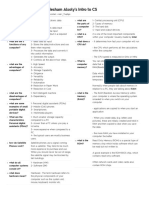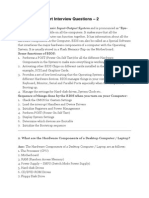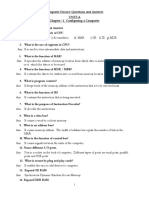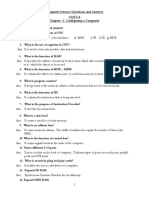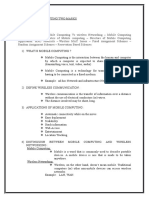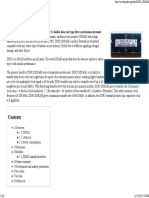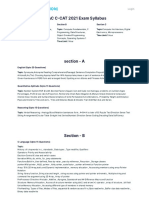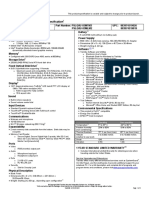0% found this document useful (0 votes)
11 views7 pagesComputer Hardware Interview Questions and Answers
The document provides a comprehensive list of 20 common computer hardware interview questions along with their answers, covering topics such as components, memory types, and system functions. It also includes additional information on networking concepts, protocols, and devices, such as DHCP, DNS, and the OSI model. This resource serves as a guide for individuals preparing for computer hardware-related interviews.
Uploaded by
Shridevi ChougalaCopyright
© © All Rights Reserved
We take content rights seriously. If you suspect this is your content, claim it here.
Available Formats
Download as DOCX, PDF, TXT or read online on Scribd
0% found this document useful (0 votes)
11 views7 pagesComputer Hardware Interview Questions and Answers
The document provides a comprehensive list of 20 common computer hardware interview questions along with their answers, covering topics such as components, memory types, and system functions. It also includes additional information on networking concepts, protocols, and devices, such as DHCP, DNS, and the OSI model. This resource serves as a guide for individuals preparing for computer hardware-related interviews.
Uploaded by
Shridevi ChougalaCopyright
© © All Rights Reserved
We take content rights seriously. If you suspect this is your content, claim it here.
Available Formats
Download as DOCX, PDF, TXT or read online on Scribd
/ 7













